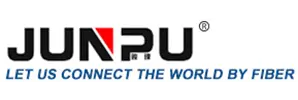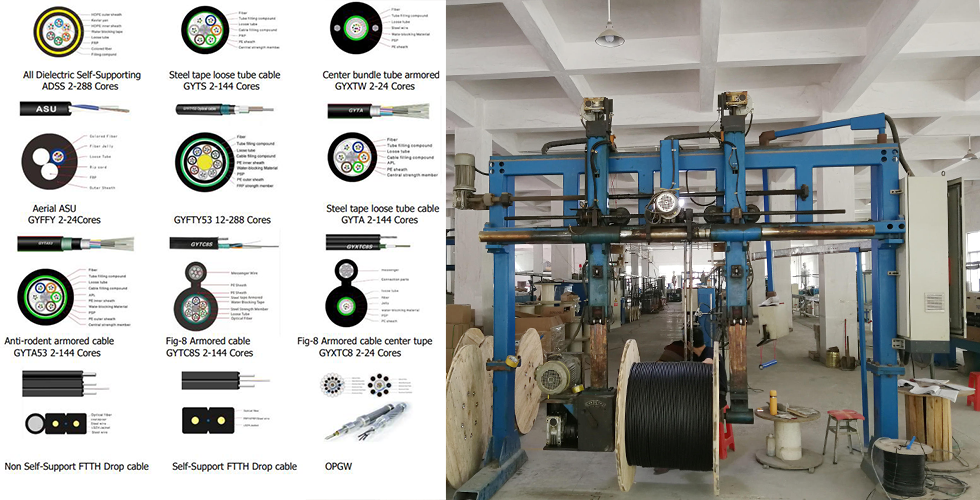
-
Home
-
Products
- Solution
- WHY JUNPU
- Services
- Resources
- News
- Contact Us


Fiber optic cables are composed of three main parts: the core, cladding, and jacket. Each component plays a crucial role in the cable's overall performance and durability.
Core: The core is the innermost part of the fiber optic cable, and it carries the light signal. It is a thin strand of optically pure glass or plastic, usually between 8 to 62.5 microns in diameter for single-mode and multi-mode fibers respectively. The core's refractive index is higher than that of the cladding to facilitate the propagation of light signals through total internal reflection.
Cladding: Surrounding the core is the cladding, which is a layer of material with a lower refractive index compared to the core. It serves to confine the light signal within the core, preventing signal leakage and maintaining the integrity of the signal. The cladding layer is typically made of glass or plastic and has a thickness of a few microns.
Jacket: The jacket, also known as the outer sheath, provides physical protection to the core and cladding. It is the outermost layer of the fiber optic cable and is made of materials like PVC, LSZH (low smoke zero halogen), or polyethylene. The jacket protects the fibers from external forces, such as moisture, chemicals, abrasion, and impacts.
In addition to these three main components, a fiber optic cable may also include various other layers, such as strength members, water-blocking materials, and additional sheathing and armor for added protection in outdoor or harsh environments. The design and construction of the core, cladding, and jacket are critical in ensuring efficient light transmission and the long-term performance and reliability of fiber optic cables.
Fiber optic cable connectors and termination methods are essential components when it comes to the installation and maintenance of fiber optic networks. These connectors allow for the seamless connection of optical fibers, ensuring efficient data transmission.
There are several types of fiber optic connectors commonly used today, including the SC (Subscriber Connector), LC (Lucent Connector), and ST (Straight Tip). Each connector has its own unique design and method of termination, but they all serve the same purpose of connecting fibers together.
The termination method for fiber optic connectors can vary depending on the type of connector being used. Common termination methods include epoxy/polish, mechanical splice, and fusion splice. Epoxy/polish termination involves applying an adhesive to the connector and then polishing the end face of the fiber to ensure a smooth connection. Mechanical splice termination involves aligning the fibers with a mechanical device, which holds them in place and provides a secure connection. Fusion splice termination, on the other hand, involves melting the fibers together using an electric arc, creating a permanent and low-loss connection.
In summary, fiber optic cable connectors and termination methods are crucial for the proper functioning of fiber optic networks. The selection of the appropriate connector and termination method depends on factors such as the type of connector, required reliability, and ease of installation.
Fiber optic cable is widely used for long-distance communication due to its various advantages over traditional copper cables. Here are some key points about fiber optic cable for long-distance communication:
1. Low signal loss: Fiber optic cables have significantly lower signal loss compared to copper cables. This enables long-distance transmission without the need for frequent signal regeneration, resulting in cost savings and improved network efficiency.
2. High bandwidth: Fiber optic cables can transmit large amounts of data over long distances, thanks to their high bandwidth capabilities. This is especially important for long-distance communication where multiple signals need to be transmitted simultaneously.
3. Immunity to electromagnetic interference: Unlike copper cables, which are susceptible to electromagnetic interference, fiber optic cables are immune to such interference. This makes them ideal for long-distance communication where cables may run in proximity to electrical power lines or in high-interference environments.
4. Security: Fiber optic cables provide a high level of security as they do not radiate signals and are very difficult to tap into. This makes them suitable for transmitting sensitive data over long distances, such as financial transactions or government communications.
5. Durability and flexibility: Fiber optic cables are designed to be durable and can withstand harsh environmental conditions. They are also flexible, allowing for easy installation in various terrains and challenging locations.
In conclusion, fiber optic cables are the preferred choice for long-distance communication due to their low signal loss, high bandwidth, immunity to electromagnetic interference, security features, and durability. Their advanced technology and superior performance make them indispensable in modern long-distance communication networks.
 Call us on:
Call us on:  Email Us:
Email Us:  Wanhua Science and Technology Park, No. 528, Shunfeng Road, Donghu Street, Linping District, Hangzhou City, Zhejiang Province
Wanhua Science and Technology Park, No. 528, Shunfeng Road, Donghu Street, Linping District, Hangzhou City, Zhejiang Province